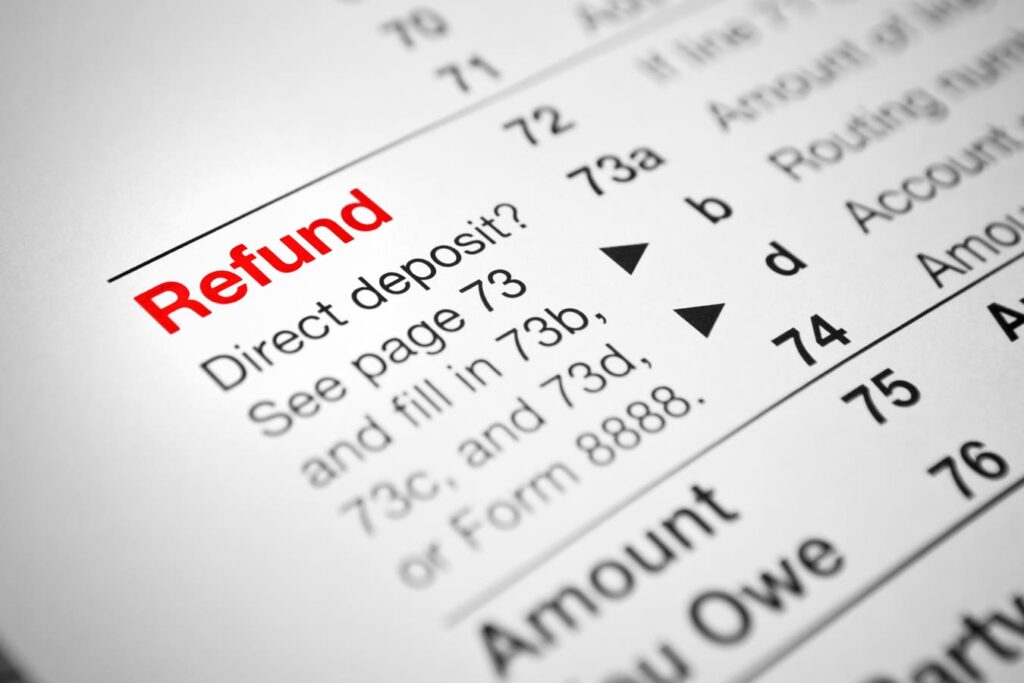Most people are anxious for their tax refund to arrive, and want to check its status. The IRS is trying to debunk what it sees as common myths about federal tax refunds. Once you file your federal tax return, if you are due a refund, it can’t come soon enough. The IRS first says you should check the status of your refund through the Where’s My Refund? tool, the IRS2Go app, or by signing in to the taxpayer’s IRS Online Account. Those are the best and most reliable ways to get updates about when your refund might arrive. Even so, from IRS Tax Tip 2025-18, here are common myths that the IRS says are circulating–and that the IRS wants to debunk.
Myth #1: Calling IRS, a tax software provider or a tax professional will provide a more accurate refund date
Many people think talking to the IRS, tax software provider or their tax professional is the best way to find out when they will get their refund. There is no need to call the IRS unless the Where’s My Refund? tool says to do so. But taxpayers who do want refund info by phone can call the automated refund hotline at 800-829-1954. This hotline has the same information as the Where’s My Refund? tool.
Myth #2: Ordering a tax transcript is a secret way to get a refund date
A tax transcript will not help taxpayers find out when they will get their refund. IRS tools like Where’s My Refund? will tell taxpayers if their refund is approved and sent.
Myth #3: Where’s My Refund? must be wrong because there’s no deposit date yet
Where’s My Refund? on both IRS.gov and the IRS2Go mobile app are updated once a day, usually at night. Even though the IRS issues most refunds within 21 days, it’s possible that a refund may take longer. Taxpayers should also consider the time it takes for the banks to post the refund to their account. People waiting for a refund in the mail should plan for the time it takes a check to arrive. If the IRS needs more information to process a tax return, the agency will contact the taxpayer by mail.
Myth #4: Where’s My Refund? must be wrong because the refund amount is less than expected
There are several reasons that can cause a tax refund to be less than expected. The IRS will mail the taxpayer a letter of explanation if any adjustments are made. Some taxpayers may also receive a letter from the Department of Treasury’s Bureau of the Fiscal Service if their refund was reduced to offset certain financial obligations. Before calling, check Where’s My Refund or wait for the letter to understand why the change was made. The letter will also tell the taxpayers know how to respond, if they need to.
Myth #5: Getting a refund this year means there’s no need to adjust withholding for 2025
To help avoid a surprise next year, taxpayers should make changes now to prepare for next year. One way to do this is to adjust their tax withholding with their employer. The IRS Tax Withholding Estimator tool can help taxpayers determine if their employer is withholding the right amount.
Taxpayers who experience a life event like marriage, divorce, the birth or adoption of a child or no longer being able to claim a person as a dependent are encouraged to check their withholding. Taxpayers can use the results from the Tax Withholding Estimator to complete and submit a new Form W-4 to their employer as soon as possible. Withholding takes place throughout the year, so it’s better to take this step now.
Checking on your refund may not make your funds come any sooner, but there’s still satisfaction in tracking its progress.
Read the full article here

